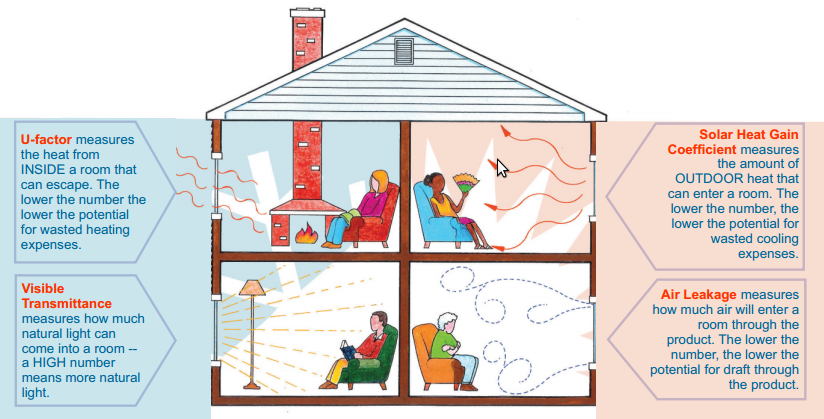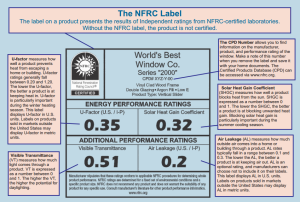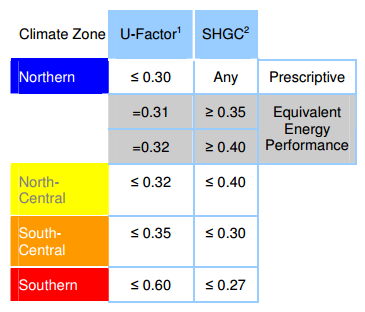Selecting Windows for Energy Efficiency
Posted on
January 15, 2015
0 Comments
Basics
While the physics of heat transfer via windows can get a bit complicated, there are two main processes that determine how well a window will perform when it comes to keeping heat in or out:- Keeping heat in – Measured by a value called the U-factor, this calculates how well a window insulates. When manufacturing windows, U-factor can be lowered by adding multiple panes and adding a layer of argon gas between the panes.
- Allowing in solar heat – Infrared wavelengths (i.e. longer wavelengths than visible light) are felt as heat. A value called Solar Heat Gain Coefficient (SHGC) measures what percentage of available solar heat a window allows inside. SHGC is expressed as a number between 0 and 1, with higher numbers letting in more solar heat. SHGC can be lowered by adding so called low-e glass coatings to the proper panes.
Understanding the NFRC Label
The National Fenestration Rating Council, or NFRC, is a non-profit organization that independently assesses, rates, and labels new windows based on their energy efficiency properties. This allows architects, builders, contractors, home owners, and anyone else to reliably compare products to one another and make an informed decision about their window choice. Look for a label like the following to determine a window has been rated by the NFRC.Frames Matter Too
There are three main types of window frames, with varying insulation properties, maintenance requirements, and costs:- Wood – Wood is an excellent insulator. Well maintained wood looks great aesthetically. Maintenance can be a chore, and wood is generally the most expensive option.
- Vinyl – Also a good insulator, maintenance for vinyl windows is easy. Vinyl windows are generally less expensive than wood ones.
- Aluminum – Though easily the cheapest option available and easy to maintain, aluminum is a very poor insulator and lets the highest amount of heat or cool escape your home.





